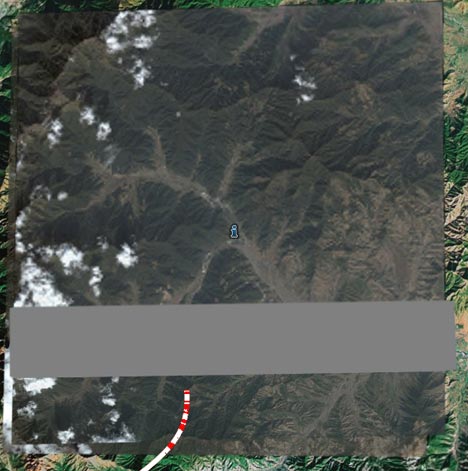WorldTribune.com comes out with an not-entirely clear article about a graphic of the Chinese anti-missile test on January 11 — the website alleges Google “self-censored” it. The graphic, a screenshot of the missile’s trajectory in Google Earth, was produced by the Science, Technology and Global Security Working Group at MIT.
While the article never spells it out, in all likelihood what it is trying to say is that the graphic has been removed from the Chinese Google Search service, the one which removes links to content censored by Chinese censors. That wouldn’t surprise me at all, and it isn’t really news.
The upside to the article, however, is that it lead us to the actual page where the MIT researchers published their findings — it comes with the original KML file that shows the trajectory of the satellite and missile in Google Earth:

Slightly more disturbing, however, is that in Google Earth, the region from which the missile was launched, the Xichang satellite launch center, shows signs of having been censored by Google. I can’t be sure, and I usually am sceptical of claims of censorship myself, and the Google Earth team itself maintains that it never censors imagery by pixelating or otherwise doctoring imagery, but look at the evidence: Two Digital Globe squares almost exactly overlap each other, with the top one at a highly reduced resolution. Finally, on top of all this, an unprecedented gray band that obscures all:

To me, this suggests that an earlier high resolution square proved too revealing, and that this has been resolved by adding a lower-resolution “patch”. Another option is that this is a data processing glitch that just happens to lie in an extremely interesting part of China. The only other explanation that I can come up with is that the US government invoked its privilege to censor Digital Globe’s satellite imagery before it was released into the public domain. Even so, there would be no reason for Google to then add this lower-resolution patch to Google Earth’s dataset, as clearly it obscures what was once crystal clear.
There was a similar grey box over the Prince Sultan Air Base in Riyadh, but it was recently fixed. I can only assume bad DG scenes sneak into the database and only get fixed when someone notices. Maybe after this blog post someone at Google notices this one. =)
On the contrary, sharpened image has a higher resolution than surrounding imagery. At the lower right of the gray zone you can note a road (here)
I tried to zoom into the rocket launching station at the ground level. Everywhere are mountains. Where is it??
Shouldn’t the long range rocket be launched in a flat ground?
Why would the US government censor China rocket launches?
Is the US government working for China?
Or are the Free Masons working to create a controvesy?
Eduin, the low resolution area is to the north of the gray zone.
Andrew — the only reason I can think of (and I think it is unlikely) is that the Pentagon doesn’t necessarily want countries with lesser satellite capabilities to know what China is and is not capable of. Why let Iran or North Korea exactly know how far China’s anti-missile technology reaches? Better to leave them guessing until it’s in your favour to tell them… But I’m just speculating.
Hey Stefan, I actually discovered this spot and a couple of others in China which were grayed out. The one at Xiachang I think really is censoring – probably not by Google, but by Digital Globe at China’s insistance. According to some information I read at Global Security, this was the site where China conducted its early ICBM nuclear missle tests…
Censorship!!! f-u-c-k Chinese censorship!!!
Well, this might surprise other Google Earth users but -nothing- in that particular region is grayed out for me.
Everything is there and showed in very fine detail.
I took many screenshots, just in case censorship eventually kicks in for me too — I have no use for these images but hey, they might turn out to show “interesting” stuff (hence, the graying).
Would it have anything to do with the fact I’m accessing Google Earth from Canada?